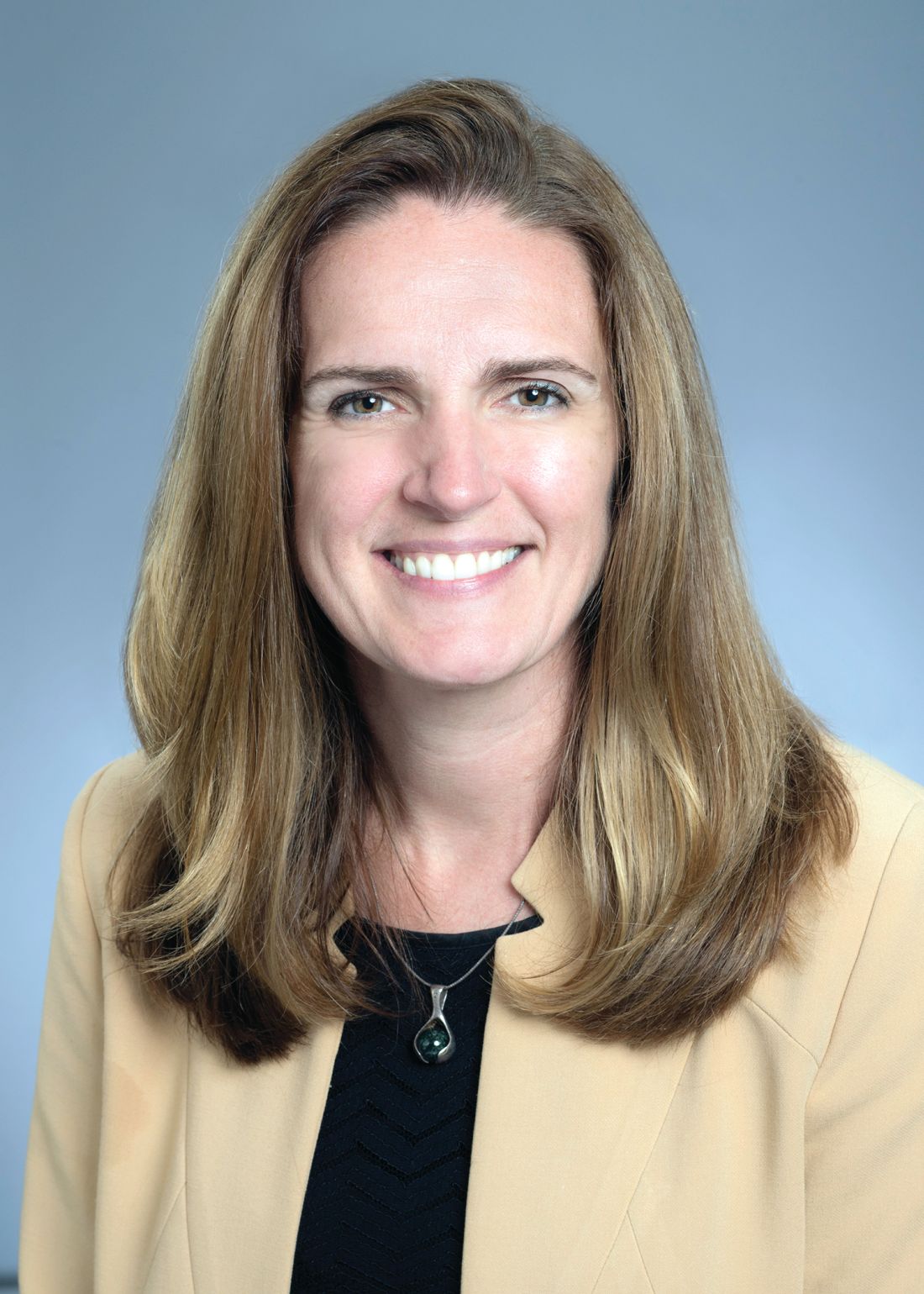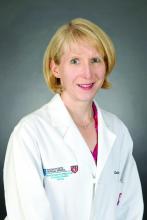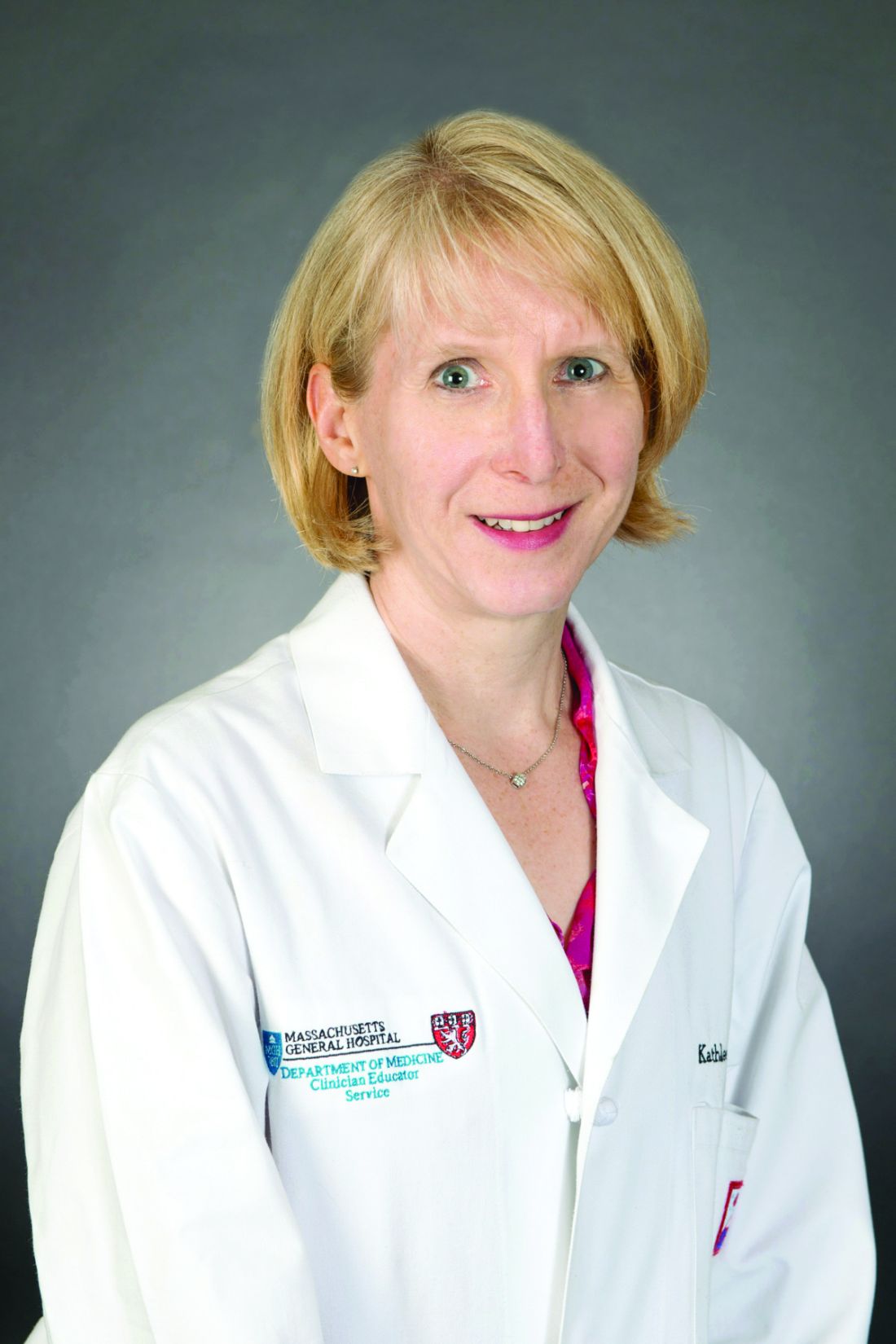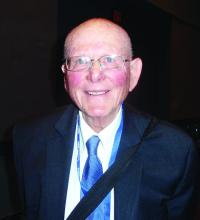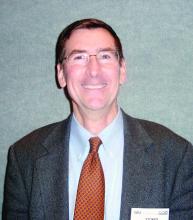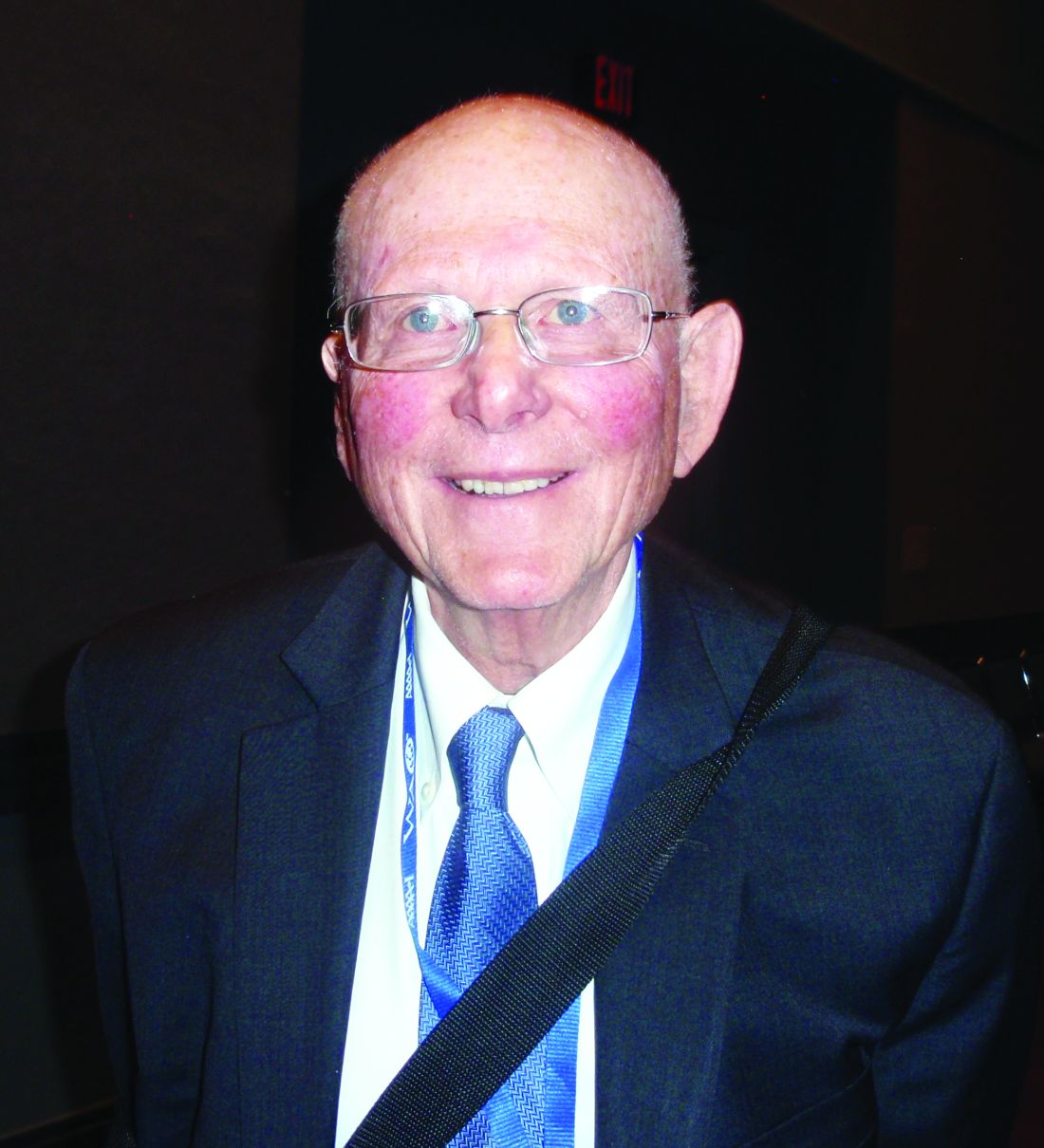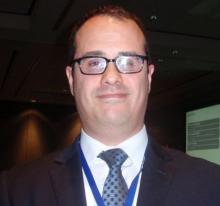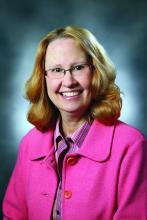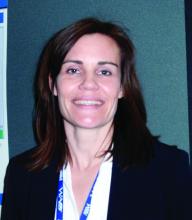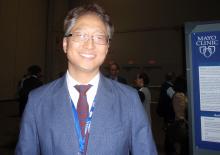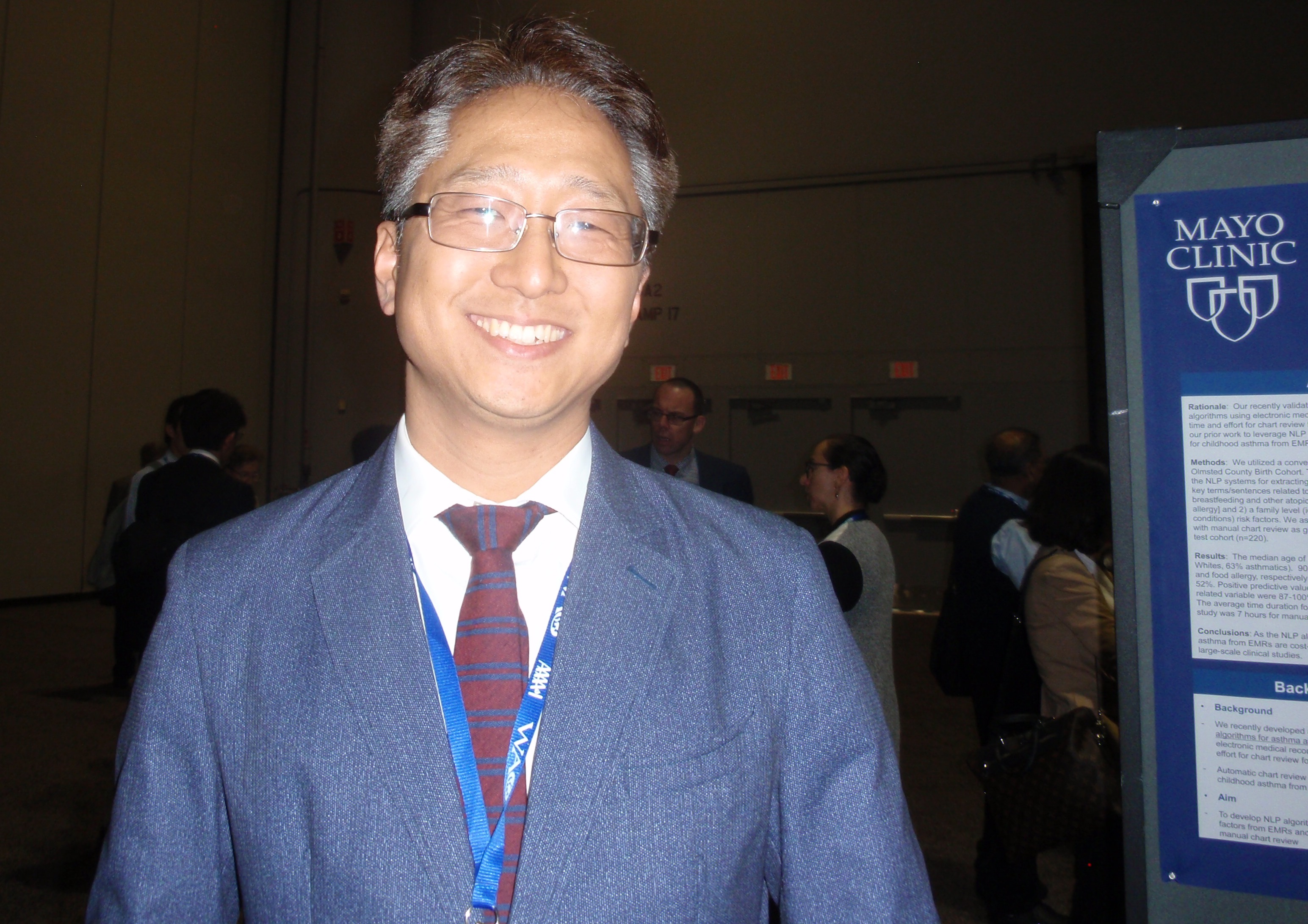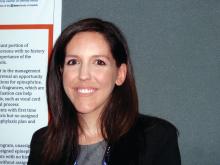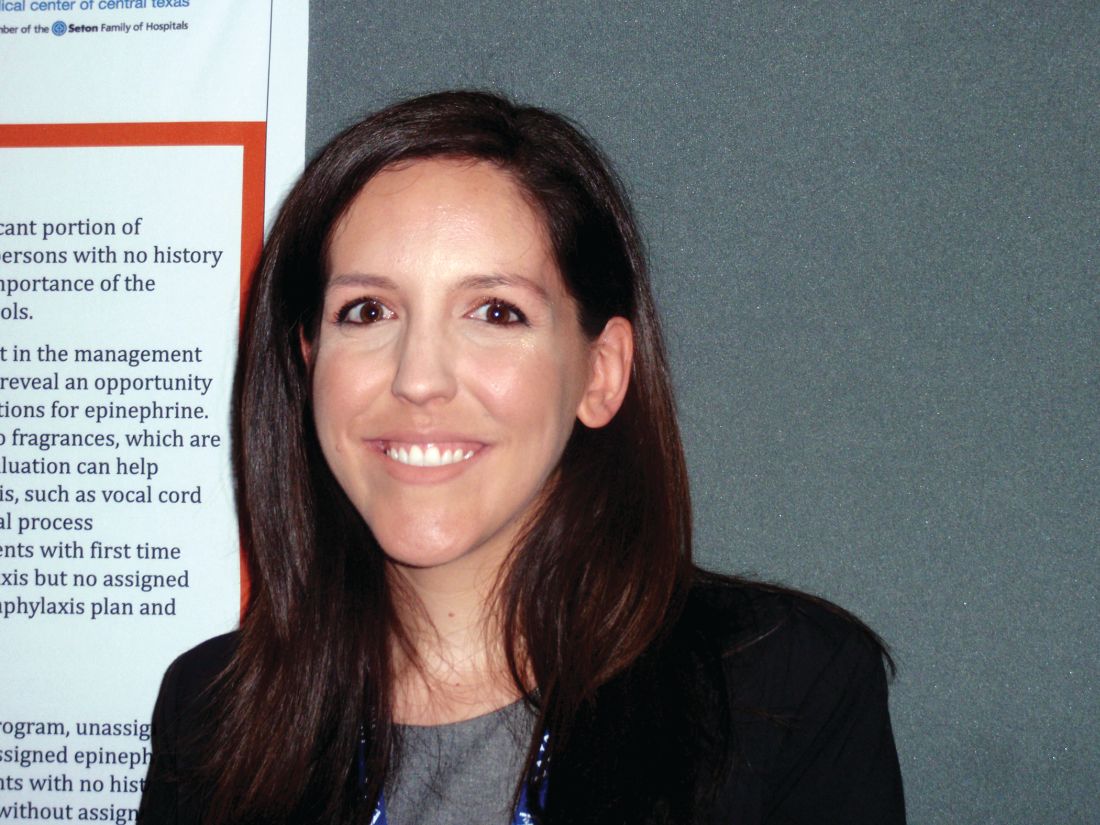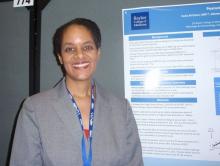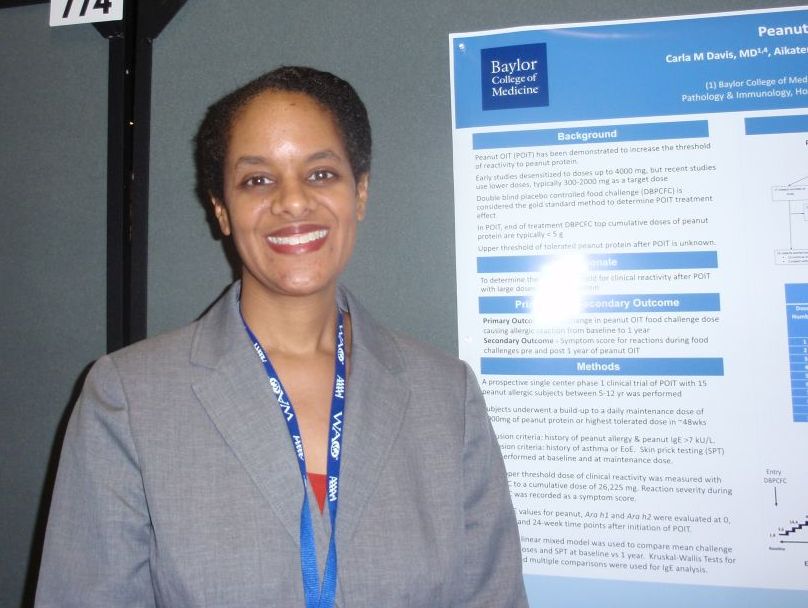User login
Tom Collins is a freelance writer in South Florida who has written about medical topics from nasty infections to ethical dilemmas, runaway tumors to tornado-chasing doctors. He travels the globe gathering conference health news and lives in West Palm Beach.
Bacteria seen as potential lupus triggers
A new study points to bacteria commonly found in the human microbiome as possible culprits in the quest to identify the elusive triggers of autoantibodies present in patients with systemic lupus erythematosus (SLE).
Anti-Ro antibodies, including anti-Ro60 antibodies, are found in about half of SLE patients, and are the most common antinuclear antibodies that can be seen preclinically. They are also pathogenic.
In a proof-of-concept study, a Yale-led research team collected microbiome samples from eight SLE patients who were positive for anti-Ro60 autoantibodies, five SLE patients who were anti-Ro60-negative, and seven healthy controls. The researchers took samples from the mouth, sternum, and stool. They found that commensal bacteria containing orthologs to Ro60 were found commonly in all of the patient groups. These included Propionibacterium propionicus, Corynebacterium amycolatum, Actinomyces massiliensis, and Bacteroides thetaiotaomicron, reported Teri M. Greiling, MD, PhD, of Yale University, New Haven, Conn., and her associates.
They also found that CD4 memory T-cell clones from lupus patients that were specific to Ro60 autoantigen were stimulated by Ro60-containing bacteria.
Researchers also colonized two groups of mice with B. thetaiotaomicron – mice with a lupuslike syndrome induced with the immune-response modifier imiquimod and those without this syndrome induced. The levels of anti-Ro60 antibodies were increased in those with the syndrome. Plus, lupus nephritislike complex depositions were seen in 88% of the glomeruli of the imiquimod-treated mice and in just 8% of those not treated with imiquimod.
“These data,” the researchers said, “suggest that Ro60 orthologs from human commensal bacteria may initiate and drive lupus pathogenesis.”
The study authors reported they had nothing to disclose. The work was supported by various grants from the National Institutes of Health, Arthritis National Research Foundation, the Arthritis Foundation, and the Lupus Research Institute, as well as NIH Intramural Research Programs.
SOURCE: Greiling TM et al. Sci Transl Med. 2018;10(434). doi: 10.1126/scitranslmed.aan2306.
A new study points to bacteria commonly found in the human microbiome as possible culprits in the quest to identify the elusive triggers of autoantibodies present in patients with systemic lupus erythematosus (SLE).
Anti-Ro antibodies, including anti-Ro60 antibodies, are found in about half of SLE patients, and are the most common antinuclear antibodies that can be seen preclinically. They are also pathogenic.
In a proof-of-concept study, a Yale-led research team collected microbiome samples from eight SLE patients who were positive for anti-Ro60 autoantibodies, five SLE patients who were anti-Ro60-negative, and seven healthy controls. The researchers took samples from the mouth, sternum, and stool. They found that commensal bacteria containing orthologs to Ro60 were found commonly in all of the patient groups. These included Propionibacterium propionicus, Corynebacterium amycolatum, Actinomyces massiliensis, and Bacteroides thetaiotaomicron, reported Teri M. Greiling, MD, PhD, of Yale University, New Haven, Conn., and her associates.
They also found that CD4 memory T-cell clones from lupus patients that were specific to Ro60 autoantigen were stimulated by Ro60-containing bacteria.
Researchers also colonized two groups of mice with B. thetaiotaomicron – mice with a lupuslike syndrome induced with the immune-response modifier imiquimod and those without this syndrome induced. The levels of anti-Ro60 antibodies were increased in those with the syndrome. Plus, lupus nephritislike complex depositions were seen in 88% of the glomeruli of the imiquimod-treated mice and in just 8% of those not treated with imiquimod.
“These data,” the researchers said, “suggest that Ro60 orthologs from human commensal bacteria may initiate and drive lupus pathogenesis.”
The study authors reported they had nothing to disclose. The work was supported by various grants from the National Institutes of Health, Arthritis National Research Foundation, the Arthritis Foundation, and the Lupus Research Institute, as well as NIH Intramural Research Programs.
SOURCE: Greiling TM et al. Sci Transl Med. 2018;10(434). doi: 10.1126/scitranslmed.aan2306.
A new study points to bacteria commonly found in the human microbiome as possible culprits in the quest to identify the elusive triggers of autoantibodies present in patients with systemic lupus erythematosus (SLE).
Anti-Ro antibodies, including anti-Ro60 antibodies, are found in about half of SLE patients, and are the most common antinuclear antibodies that can be seen preclinically. They are also pathogenic.
In a proof-of-concept study, a Yale-led research team collected microbiome samples from eight SLE patients who were positive for anti-Ro60 autoantibodies, five SLE patients who were anti-Ro60-negative, and seven healthy controls. The researchers took samples from the mouth, sternum, and stool. They found that commensal bacteria containing orthologs to Ro60 were found commonly in all of the patient groups. These included Propionibacterium propionicus, Corynebacterium amycolatum, Actinomyces massiliensis, and Bacteroides thetaiotaomicron, reported Teri M. Greiling, MD, PhD, of Yale University, New Haven, Conn., and her associates.
They also found that CD4 memory T-cell clones from lupus patients that were specific to Ro60 autoantigen were stimulated by Ro60-containing bacteria.
Researchers also colonized two groups of mice with B. thetaiotaomicron – mice with a lupuslike syndrome induced with the immune-response modifier imiquimod and those without this syndrome induced. The levels of anti-Ro60 antibodies were increased in those with the syndrome. Plus, lupus nephritislike complex depositions were seen in 88% of the glomeruli of the imiquimod-treated mice and in just 8% of those not treated with imiquimod.
“These data,” the researchers said, “suggest that Ro60 orthologs from human commensal bacteria may initiate and drive lupus pathogenesis.”
The study authors reported they had nothing to disclose. The work was supported by various grants from the National Institutes of Health, Arthritis National Research Foundation, the Arthritis Foundation, and the Lupus Research Institute, as well as NIH Intramural Research Programs.
SOURCE: Greiling TM et al. Sci Transl Med. 2018;10(434). doi: 10.1126/scitranslmed.aan2306.
FROM SCIENCE TRANSLATIONAL MEDICINE
Key clinical point:
Major finding: Autoreactive human lupus CD4-positive T cells cross-reacted with Ro60 ortholog–containing commensal bacteria.
Study details: A proof-of-concept study including microbiota samples from eight anti–Ro60-positive lupus patients, five anti–Ro60-negative lupus patients, and seven healthy controls.
Disclosures: The study authors reported they had nothing to disclose. The work was supported by various grants from the National Institutes of Health, Arthritis National Research Foundation, the Arthritis Foundation, and the Lupus Research Institute, as well as NIH Intramural Research Programs.
Source: Greiling TM et al. Sci Transl Med. 2018;10(434). doi: 10.1126/scitranslmed.aan2306.
Speed mentoring returns to HM meeting
About 6 years ago, members of the Society of Hospital Medicine’s Academic Hospitalist Committee got together to try to answer a question: How do we meet the mentoring needs of junior hospitalists?
One answer was inspired by the singles social scene.
Joanna Bonsall, MD, PhD, SFHM, assistant professor of medicine at Emory University, Atlanta, has been a part of coordinating the event since the beginning.
“We tried it out for the first year, and it was wildly successful,” she said. “The feedback was enormous, so we’ve continued it ever since.”
Hospitalists looking for mentoring time with senior hospitalists submit their curriculum vitae and a question they’d like to have answered. Then they’re paired with three mentors who have expertise in that field, meeting with each for 15 minutes.
For instance, someone asking – How can I improve my teaching skills with medical students? – would be paired with veteran hospitalists known for their education skills. In its first year, there were 12 slots available. It has since expanded, and this year, there are 20 slots. Registration closed a month before the annual conference.
Dr. Bonsall said that mentoring, including the speed mentoring event, is all about matching up ambition and talent with ways to put them to use.
“I believe that our field is so full of talent, and I think that because we’re a relatively junior field, there is a lot of untapped talent out there – people who have energy and don’t know what to do with it,” she said. “I feel the same way about faculty development. Mentoring is so key to help connect the energy to things that they can do.”
About 6 years ago, members of the Society of Hospital Medicine’s Academic Hospitalist Committee got together to try to answer a question: How do we meet the mentoring needs of junior hospitalists?
One answer was inspired by the singles social scene.
Joanna Bonsall, MD, PhD, SFHM, assistant professor of medicine at Emory University, Atlanta, has been a part of coordinating the event since the beginning.
“We tried it out for the first year, and it was wildly successful,” she said. “The feedback was enormous, so we’ve continued it ever since.”
Hospitalists looking for mentoring time with senior hospitalists submit their curriculum vitae and a question they’d like to have answered. Then they’re paired with three mentors who have expertise in that field, meeting with each for 15 minutes.
For instance, someone asking – How can I improve my teaching skills with medical students? – would be paired with veteran hospitalists known for their education skills. In its first year, there were 12 slots available. It has since expanded, and this year, there are 20 slots. Registration closed a month before the annual conference.
Dr. Bonsall said that mentoring, including the speed mentoring event, is all about matching up ambition and talent with ways to put them to use.
“I believe that our field is so full of talent, and I think that because we’re a relatively junior field, there is a lot of untapped talent out there – people who have energy and don’t know what to do with it,” she said. “I feel the same way about faculty development. Mentoring is so key to help connect the energy to things that they can do.”
About 6 years ago, members of the Society of Hospital Medicine’s Academic Hospitalist Committee got together to try to answer a question: How do we meet the mentoring needs of junior hospitalists?
One answer was inspired by the singles social scene.
Joanna Bonsall, MD, PhD, SFHM, assistant professor of medicine at Emory University, Atlanta, has been a part of coordinating the event since the beginning.
“We tried it out for the first year, and it was wildly successful,” she said. “The feedback was enormous, so we’ve continued it ever since.”
Hospitalists looking for mentoring time with senior hospitalists submit their curriculum vitae and a question they’d like to have answered. Then they’re paired with three mentors who have expertise in that field, meeting with each for 15 minutes.
For instance, someone asking – How can I improve my teaching skills with medical students? – would be paired with veteran hospitalists known for their education skills. In its first year, there were 12 slots available. It has since expanded, and this year, there are 20 slots. Registration closed a month before the annual conference.
Dr. Bonsall said that mentoring, including the speed mentoring event, is all about matching up ambition and talent with ways to put them to use.
“I believe that our field is so full of talent, and I think that because we’re a relatively junior field, there is a lot of untapped talent out there – people who have energy and don’t know what to do with it,” she said. “I feel the same way about faculty development. Mentoring is so key to help connect the energy to things that they can do.”
New tracks bring focus to HM18 program
The theme for HM18 could well be “in with the new, and in with the new.”
Conference planners have managed to pack HM18 with five new tracks: Great Debate, Nurse Practitioner/Physician Assistant (NP/PA), Palliative Care, Seasoning Your Career, and a new Career Development workshop track. And they did this while eliminating only one track that was on the schedule last year – Technology – and without adding any extra days to the meeting.
The trick was including more half-day tracks. With more tracks in smaller time chunks, the schedule provides more flexibility, and attendees have more choices to find what they’re looking for, said Kathleen Finn, MD, MPhil, SFHM, an assistant professor of medicine at Harvard Medical School, Boston, and the HM18 course director.
“We decided, since there were a bunch of themes that we really wanted to cover, we would do half-day tracks. The shorter tracks also are a way to gauge interest in a topic without making a big commitment to it,” Dr. Finn said. “The grouping of topics in smaller tracks in the Day-at-a-Glance helps people easily see a collection of lectures or a theme they might want to attend.”
While choosing themes for the conference, the planners were trying to stay true to their own theme: timeliness.
Assistant course director Dustin Smith, MD, SFHM, an associate professor of medicine at Emory University, Atlanta, said much of the information for this year’s conference came from the 2017 annual meeting, including attendance at sessions, speaker reviews, and session ratings.
“It’s building on momentum from the previous meeting,” he said. “Sometimes we choose things to offer that we know are going to go well, and sometimes we choose things that we hope go well, and all of a sudden we see [that they] go very, very well.” For instance, he said, the topic of sepsis was so popular last year that it has its own pre-course this year.
The data on which the HM18 program is built don’t stop there. The 23 members of the planning committee all bring their own thoughts and experiences, as well as input from colleagues at their own centers. Then there are the submissions for workshop topics: Any SHM member can submit an idea, and those ideas help organizers see patterns of interest that can affect the planning of the rest of the sessions.
Here are more details on the new tracks:
Great Debate
The annual meeting has traditionally had a “Great Debate” on perioperative medicine, but the format – with carefully chosen speakers who are dynamic and entertaining – will be used to cover pulmonary medicine and infectious diseases this year as well.
“It’s a hugely successful talk,” Dr. Finn said. “We can tell by our numbers that lots of people go, and it’s always funny, and it’s a very clever way of discussing the latest literature – by having two very dynamic speakers present a case and then debate the two options of the case and then use the literature to support the answer.”
NP/PA
This track includes topics that are chosen by the committee for advanced practice professionals.
“There are many hospitalist programs that include NP/PAs, and everybody is struggling with how best to incorporate NPs and PAs into the group practice and have everybody work at the top of their license and work well together,” Dr. Finn said.
“The idea, too, is to be very inclusive of all providers and offering a track that focuses on NP/PAs but also includes physicians, physician leaders, and physician administrators,” Dr. Smith said. “It’s not designed for one type of practicing professional; it should be a good educational track for all.”
Palliative Care
This was a topic that had been sprinkled throughout programs in previous years, but Dr. Finn and Dr. Smith said it was considered too important not to have its own track this year.
“I think hospitalists often are the doctors caring for patients at the end of their lives since many Americans die in the hospital,” Dr. Finn said. “As a result, this is a skill set that as hospitalists we need to be very good at.”
Seasoning Your Career
This is a track geared toward one of this year’s themes: With “hospital medicine” now a concept that’s more than 2 decades old, how do hospitalists keep up the momentum in their careers, how do they take stock, how do they make the important decisions they face as they move ahead in their jobs?
“Hospital medicine is now more than 20 years old – many hospitalists are now mid-career,” Dr. Finn said. “This track can help people reflect on and rethink their career. Do you want to expand what you’re doing? Do you want to change it? How do you make this a lifelong career?”
Career Development
There have always been workshops with a career-development focus, but this year, six of them were chosen to be placed under the heading of an official “Career Development” workshop track.
“Are there other skills you want to take on for the second half of your career?” Dr. Finn said. “Do you want to take on leadership? Do you want to learn how to better give your peers feedback? Do you want to promote women in your group? Do you want to prevent burnout or use emotional intelligence to improve your career?”
Aside from the new tracks, the course directors also drew attention to other new elements of the HM18 program.
For instance, there are new topics in the Rapid Fire sessions. In the “Managing the Patient on Your Service: Appendicitis, Bowel, and Biliary Obstruction” session, a general surgeon will talk about how to manage these surgical issues when the patient is on a medical service. In “Interventional Radiology: What Every Hospitalist Needs to Know,” an interventional radiologist will discuss when hospitalists may want to call in an interventional radiologist or refer to a hospital that has an interventional radiologist. And “Vulnerable Populations and Hospitalists” will focus on social determinants of health.
As for catchy Disney-influenced titles, such as “The Mad Hatter: Updates in Delirium” and “Waiting in Line for ‘It’s a Small World’ and Other Things We Do for No Reason,” part of the credit can go to Dr. Finn’s niece. She said she “hired” her to come up with a list of Disney, Pixar, and Harry Potter movies and catchphrases. Then the committee worked them into the session titles.
“One of the hopes for me at this meeting is that people bring their inner child and explore new ideas, new topics, and new career possibilities,” Dr. Finn said.
The theme for HM18 could well be “in with the new, and in with the new.”
Conference planners have managed to pack HM18 with five new tracks: Great Debate, Nurse Practitioner/Physician Assistant (NP/PA), Palliative Care, Seasoning Your Career, and a new Career Development workshop track. And they did this while eliminating only one track that was on the schedule last year – Technology – and without adding any extra days to the meeting.
The trick was including more half-day tracks. With more tracks in smaller time chunks, the schedule provides more flexibility, and attendees have more choices to find what they’re looking for, said Kathleen Finn, MD, MPhil, SFHM, an assistant professor of medicine at Harvard Medical School, Boston, and the HM18 course director.
“We decided, since there were a bunch of themes that we really wanted to cover, we would do half-day tracks. The shorter tracks also are a way to gauge interest in a topic without making a big commitment to it,” Dr. Finn said. “The grouping of topics in smaller tracks in the Day-at-a-Glance helps people easily see a collection of lectures or a theme they might want to attend.”
While choosing themes for the conference, the planners were trying to stay true to their own theme: timeliness.
Assistant course director Dustin Smith, MD, SFHM, an associate professor of medicine at Emory University, Atlanta, said much of the information for this year’s conference came from the 2017 annual meeting, including attendance at sessions, speaker reviews, and session ratings.
“It’s building on momentum from the previous meeting,” he said. “Sometimes we choose things to offer that we know are going to go well, and sometimes we choose things that we hope go well, and all of a sudden we see [that they] go very, very well.” For instance, he said, the topic of sepsis was so popular last year that it has its own pre-course this year.
The data on which the HM18 program is built don’t stop there. The 23 members of the planning committee all bring their own thoughts and experiences, as well as input from colleagues at their own centers. Then there are the submissions for workshop topics: Any SHM member can submit an idea, and those ideas help organizers see patterns of interest that can affect the planning of the rest of the sessions.
Here are more details on the new tracks:
Great Debate
The annual meeting has traditionally had a “Great Debate” on perioperative medicine, but the format – with carefully chosen speakers who are dynamic and entertaining – will be used to cover pulmonary medicine and infectious diseases this year as well.
“It’s a hugely successful talk,” Dr. Finn said. “We can tell by our numbers that lots of people go, and it’s always funny, and it’s a very clever way of discussing the latest literature – by having two very dynamic speakers present a case and then debate the two options of the case and then use the literature to support the answer.”
NP/PA
This track includes topics that are chosen by the committee for advanced practice professionals.
“There are many hospitalist programs that include NP/PAs, and everybody is struggling with how best to incorporate NPs and PAs into the group practice and have everybody work at the top of their license and work well together,” Dr. Finn said.
“The idea, too, is to be very inclusive of all providers and offering a track that focuses on NP/PAs but also includes physicians, physician leaders, and physician administrators,” Dr. Smith said. “It’s not designed for one type of practicing professional; it should be a good educational track for all.”
Palliative Care
This was a topic that had been sprinkled throughout programs in previous years, but Dr. Finn and Dr. Smith said it was considered too important not to have its own track this year.
“I think hospitalists often are the doctors caring for patients at the end of their lives since many Americans die in the hospital,” Dr. Finn said. “As a result, this is a skill set that as hospitalists we need to be very good at.”
Seasoning Your Career
This is a track geared toward one of this year’s themes: With “hospital medicine” now a concept that’s more than 2 decades old, how do hospitalists keep up the momentum in their careers, how do they take stock, how do they make the important decisions they face as they move ahead in their jobs?
“Hospital medicine is now more than 20 years old – many hospitalists are now mid-career,” Dr. Finn said. “This track can help people reflect on and rethink their career. Do you want to expand what you’re doing? Do you want to change it? How do you make this a lifelong career?”
Career Development
There have always been workshops with a career-development focus, but this year, six of them were chosen to be placed under the heading of an official “Career Development” workshop track.
“Are there other skills you want to take on for the second half of your career?” Dr. Finn said. “Do you want to take on leadership? Do you want to learn how to better give your peers feedback? Do you want to promote women in your group? Do you want to prevent burnout or use emotional intelligence to improve your career?”
Aside from the new tracks, the course directors also drew attention to other new elements of the HM18 program.
For instance, there are new topics in the Rapid Fire sessions. In the “Managing the Patient on Your Service: Appendicitis, Bowel, and Biliary Obstruction” session, a general surgeon will talk about how to manage these surgical issues when the patient is on a medical service. In “Interventional Radiology: What Every Hospitalist Needs to Know,” an interventional radiologist will discuss when hospitalists may want to call in an interventional radiologist or refer to a hospital that has an interventional radiologist. And “Vulnerable Populations and Hospitalists” will focus on social determinants of health.
As for catchy Disney-influenced titles, such as “The Mad Hatter: Updates in Delirium” and “Waiting in Line for ‘It’s a Small World’ and Other Things We Do for No Reason,” part of the credit can go to Dr. Finn’s niece. She said she “hired” her to come up with a list of Disney, Pixar, and Harry Potter movies and catchphrases. Then the committee worked them into the session titles.
“One of the hopes for me at this meeting is that people bring their inner child and explore new ideas, new topics, and new career possibilities,” Dr. Finn said.
The theme for HM18 could well be “in with the new, and in with the new.”
Conference planners have managed to pack HM18 with five new tracks: Great Debate, Nurse Practitioner/Physician Assistant (NP/PA), Palliative Care, Seasoning Your Career, and a new Career Development workshop track. And they did this while eliminating only one track that was on the schedule last year – Technology – and without adding any extra days to the meeting.
The trick was including more half-day tracks. With more tracks in smaller time chunks, the schedule provides more flexibility, and attendees have more choices to find what they’re looking for, said Kathleen Finn, MD, MPhil, SFHM, an assistant professor of medicine at Harvard Medical School, Boston, and the HM18 course director.
“We decided, since there were a bunch of themes that we really wanted to cover, we would do half-day tracks. The shorter tracks also are a way to gauge interest in a topic without making a big commitment to it,” Dr. Finn said. “The grouping of topics in smaller tracks in the Day-at-a-Glance helps people easily see a collection of lectures or a theme they might want to attend.”
While choosing themes for the conference, the planners were trying to stay true to their own theme: timeliness.
Assistant course director Dustin Smith, MD, SFHM, an associate professor of medicine at Emory University, Atlanta, said much of the information for this year’s conference came from the 2017 annual meeting, including attendance at sessions, speaker reviews, and session ratings.
“It’s building on momentum from the previous meeting,” he said. “Sometimes we choose things to offer that we know are going to go well, and sometimes we choose things that we hope go well, and all of a sudden we see [that they] go very, very well.” For instance, he said, the topic of sepsis was so popular last year that it has its own pre-course this year.
The data on which the HM18 program is built don’t stop there. The 23 members of the planning committee all bring their own thoughts and experiences, as well as input from colleagues at their own centers. Then there are the submissions for workshop topics: Any SHM member can submit an idea, and those ideas help organizers see patterns of interest that can affect the planning of the rest of the sessions.
Here are more details on the new tracks:
Great Debate
The annual meeting has traditionally had a “Great Debate” on perioperative medicine, but the format – with carefully chosen speakers who are dynamic and entertaining – will be used to cover pulmonary medicine and infectious diseases this year as well.
“It’s a hugely successful talk,” Dr. Finn said. “We can tell by our numbers that lots of people go, and it’s always funny, and it’s a very clever way of discussing the latest literature – by having two very dynamic speakers present a case and then debate the two options of the case and then use the literature to support the answer.”
NP/PA
This track includes topics that are chosen by the committee for advanced practice professionals.
“There are many hospitalist programs that include NP/PAs, and everybody is struggling with how best to incorporate NPs and PAs into the group practice and have everybody work at the top of their license and work well together,” Dr. Finn said.
“The idea, too, is to be very inclusive of all providers and offering a track that focuses on NP/PAs but also includes physicians, physician leaders, and physician administrators,” Dr. Smith said. “It’s not designed for one type of practicing professional; it should be a good educational track for all.”
Palliative Care
This was a topic that had been sprinkled throughout programs in previous years, but Dr. Finn and Dr. Smith said it was considered too important not to have its own track this year.
“I think hospitalists often are the doctors caring for patients at the end of their lives since many Americans die in the hospital,” Dr. Finn said. “As a result, this is a skill set that as hospitalists we need to be very good at.”
Seasoning Your Career
This is a track geared toward one of this year’s themes: With “hospital medicine” now a concept that’s more than 2 decades old, how do hospitalists keep up the momentum in their careers, how do they take stock, how do they make the important decisions they face as they move ahead in their jobs?
“Hospital medicine is now more than 20 years old – many hospitalists are now mid-career,” Dr. Finn said. “This track can help people reflect on and rethink their career. Do you want to expand what you’re doing? Do you want to change it? How do you make this a lifelong career?”
Career Development
There have always been workshops with a career-development focus, but this year, six of them were chosen to be placed under the heading of an official “Career Development” workshop track.
“Are there other skills you want to take on for the second half of your career?” Dr. Finn said. “Do you want to take on leadership? Do you want to learn how to better give your peers feedback? Do you want to promote women in your group? Do you want to prevent burnout or use emotional intelligence to improve your career?”
Aside from the new tracks, the course directors also drew attention to other new elements of the HM18 program.
For instance, there are new topics in the Rapid Fire sessions. In the “Managing the Patient on Your Service: Appendicitis, Bowel, and Biliary Obstruction” session, a general surgeon will talk about how to manage these surgical issues when the patient is on a medical service. In “Interventional Radiology: What Every Hospitalist Needs to Know,” an interventional radiologist will discuss when hospitalists may want to call in an interventional radiologist or refer to a hospital that has an interventional radiologist. And “Vulnerable Populations and Hospitalists” will focus on social determinants of health.
As for catchy Disney-influenced titles, such as “The Mad Hatter: Updates in Delirium” and “Waiting in Line for ‘It’s a Small World’ and Other Things We Do for No Reason,” part of the credit can go to Dr. Finn’s niece. She said she “hired” her to come up with a list of Disney, Pixar, and Harry Potter movies and catchphrases. Then the committee worked them into the session titles.
“One of the hopes for me at this meeting is that people bring their inner child and explore new ideas, new topics, and new career possibilities,” Dr. Finn said.
Good definitions, research lacking for COPD-asthma overlap
ORLANDO – to give clinicians data they can actually use.
The topic is even more pressing given the growing interest and research into biological treatments for asthma and consideration of their possible use in COPD, experts said at the joint congress of the American Academy of Allergy, Asthma, and Immunology and the World Asthma Organization. Their remarks came in what was ostensibly a “debate” on whether ACOS is a distinct entity requiring special treatment but largely turned into a discussion about gaps in knowledge on the topic.
“The problem here is that it has not been defined in a way that everyone agrees on – that does create a problem because, if there’s no consensus on the diagnostic criteria, then it may be difficult to study this overlap,” said Donald Tashkin, MD, director of the pulmonary function laboratories at the University of California, Los Angeles. “Because there is no agreement on how to diagnose ACOS, it hasn’t been studied with respect to its responsiveness to different treatment options.”R. Stokes Peebles Jr., MD, professor of allergy, pulmonary, and critical care medicine at Vanderbilt University Medical Center, Nashville, Tenn., said that, although the number of published articles on ACOS has skyrocketed over the last several years, review articles have outnumbered original research articles.
There is disagreement in published definitions: One set of definitions includes a criterion of fractional exhaled nitric oxide not seen in any other definitions, whereas some other definitions require a history of smoking while others don’t, he said.
“How does one manage a disease without a definition and without clinical studies? It’s impossible for me to know,” Dr. Peebles said.
Jeffrey Drazen, MD, the Distinguished Parker B. Francis Professor of Medicine at Harvard Medical School, Boston, and the editor of the New England Journal of Medicine, also lamented the polar nature of the research.
“We all treat patients in the middle, everybody does, all the time – and we would love more guidance,” he said. “One of the reasons the number of articles has gone up is that there have been lots of case definitions. But we can’t get consensus. So who do we have to bring to the table to get a consensus definition so we can get the funding we need from the drug companies or governmental bodies to do the research that we all want?”
Dr. Tashkin said the way forward could be to draw on the points of consensus that do exist on certain criteria.
Dr. Peebles said an international panel is needed to draw up a consensus guideline, with the panel including both pulmonologists and allergists – “people experienced with clinical trials, who take care of a lot of patients.”
ORLANDO – to give clinicians data they can actually use.
The topic is even more pressing given the growing interest and research into biological treatments for asthma and consideration of their possible use in COPD, experts said at the joint congress of the American Academy of Allergy, Asthma, and Immunology and the World Asthma Organization. Their remarks came in what was ostensibly a “debate” on whether ACOS is a distinct entity requiring special treatment but largely turned into a discussion about gaps in knowledge on the topic.
“The problem here is that it has not been defined in a way that everyone agrees on – that does create a problem because, if there’s no consensus on the diagnostic criteria, then it may be difficult to study this overlap,” said Donald Tashkin, MD, director of the pulmonary function laboratories at the University of California, Los Angeles. “Because there is no agreement on how to diagnose ACOS, it hasn’t been studied with respect to its responsiveness to different treatment options.”R. Stokes Peebles Jr., MD, professor of allergy, pulmonary, and critical care medicine at Vanderbilt University Medical Center, Nashville, Tenn., said that, although the number of published articles on ACOS has skyrocketed over the last several years, review articles have outnumbered original research articles.
There is disagreement in published definitions: One set of definitions includes a criterion of fractional exhaled nitric oxide not seen in any other definitions, whereas some other definitions require a history of smoking while others don’t, he said.
“How does one manage a disease without a definition and without clinical studies? It’s impossible for me to know,” Dr. Peebles said.
Jeffrey Drazen, MD, the Distinguished Parker B. Francis Professor of Medicine at Harvard Medical School, Boston, and the editor of the New England Journal of Medicine, also lamented the polar nature of the research.
“We all treat patients in the middle, everybody does, all the time – and we would love more guidance,” he said. “One of the reasons the number of articles has gone up is that there have been lots of case definitions. But we can’t get consensus. So who do we have to bring to the table to get a consensus definition so we can get the funding we need from the drug companies or governmental bodies to do the research that we all want?”
Dr. Tashkin said the way forward could be to draw on the points of consensus that do exist on certain criteria.
Dr. Peebles said an international panel is needed to draw up a consensus guideline, with the panel including both pulmonologists and allergists – “people experienced with clinical trials, who take care of a lot of patients.”
ORLANDO – to give clinicians data they can actually use.
The topic is even more pressing given the growing interest and research into biological treatments for asthma and consideration of their possible use in COPD, experts said at the joint congress of the American Academy of Allergy, Asthma, and Immunology and the World Asthma Organization. Their remarks came in what was ostensibly a “debate” on whether ACOS is a distinct entity requiring special treatment but largely turned into a discussion about gaps in knowledge on the topic.
“The problem here is that it has not been defined in a way that everyone agrees on – that does create a problem because, if there’s no consensus on the diagnostic criteria, then it may be difficult to study this overlap,” said Donald Tashkin, MD, director of the pulmonary function laboratories at the University of California, Los Angeles. “Because there is no agreement on how to diagnose ACOS, it hasn’t been studied with respect to its responsiveness to different treatment options.”R. Stokes Peebles Jr., MD, professor of allergy, pulmonary, and critical care medicine at Vanderbilt University Medical Center, Nashville, Tenn., said that, although the number of published articles on ACOS has skyrocketed over the last several years, review articles have outnumbered original research articles.
There is disagreement in published definitions: One set of definitions includes a criterion of fractional exhaled nitric oxide not seen in any other definitions, whereas some other definitions require a history of smoking while others don’t, he said.
“How does one manage a disease without a definition and without clinical studies? It’s impossible for me to know,” Dr. Peebles said.
Jeffrey Drazen, MD, the Distinguished Parker B. Francis Professor of Medicine at Harvard Medical School, Boston, and the editor of the New England Journal of Medicine, also lamented the polar nature of the research.
“We all treat patients in the middle, everybody does, all the time – and we would love more guidance,” he said. “One of the reasons the number of articles has gone up is that there have been lots of case definitions. But we can’t get consensus. So who do we have to bring to the table to get a consensus definition so we can get the funding we need from the drug companies or governmental bodies to do the research that we all want?”
Dr. Tashkin said the way forward could be to draw on the points of consensus that do exist on certain criteria.
Dr. Peebles said an international panel is needed to draw up a consensus guideline, with the panel including both pulmonologists and allergists – “people experienced with clinical trials, who take care of a lot of patients.”
EXPERT ANALYSIS FROM AAAAI/WAO JOINT CONGRESS
New approaches needed for food allergies in minority children
ORLANDO – compared with their white counterparts, an expert said.
These ethnic groups have higher odds of food sensitization compared with whites, and an analysis of the U.S. National Mortality Database found a higher rate of food-related anaphylaxis that turned fatal more often among African-Americans than among whites, Mahboobeh Mahdavinia, MD, PhD, an allergist and immunologist at Rush University Medical Center, Chicago, said at the joint congress of the American Academy of Asthma, Allergy, and Immunology and the World Asthma Organization.
The “sadder news,” she said, is that the rate of fatal food-related anaphylaxis has been getting worse with time. Rates of fatal food-related anaphylaxis per million significantly increased in African American males from the period of 1999-2001 (.06), compared with 2008-2010 (.21) (P less than .001). Fatal anaphylaxis caused by food was significantly associated with African American race (P less than .001) (J Allergy Clin Immunol. 2014 Dec;134[6]:1318-28.e7).
“There has been a lot of research and increasing awareness about food allergy, but this has certainly not affected minorities, and they’re even dying more from these diseases,” Dr. Mahdavinia said.
Studies also have shown that African-American and Hispanic children have a higher rate of emergency department visits for food allergy, compared with white children. Dr. Mahdavinia said this might be because the severity of their allergies is worse, because they have less access to primary care, they have inferior practices at home to manage the allergies, and that higher asthma rates in these children is likely leading to worse food allergy incidents.
Compared with white children, African American children were significantly more likely to have allergy to wheat, soy, corn, fish, and shellfish (P less than .01). Compared with white children, Hispanic children were significantly more likely to have allergy to corn, fish, and shellfish (P less than .01) (J Allergy Clin Immunol Pract. 2017 Mar-Apr;5[2]:352-7.e1).
Children from low-income backgrounds, she noted, spend less on specialty outpatient care.
The difference in food allergy rates is likely linked, in part, to familial and cultural differences in childrearing, she said. African-American and Hispanic parents tend to introduce solid foods earlier, and breastfeed children at lower rates than those of white families.
Dr. Mahdavinia noted that while more affluent families are able to sidestep allergies by making a simple stop at a high-end grocer to get an allergen-free version of a food, poorer families are less able to buy these more expensive alternatives.
“The higher rate of asthma anaphylaxis observed in these minority children is concerning, especially when it’s considered in the context of the reported higher rate of fatal anaphylaxis associated food allergy in African Americans,” she said. “So there’s a tremendous need for future studies.”
ORLANDO – compared with their white counterparts, an expert said.
These ethnic groups have higher odds of food sensitization compared with whites, and an analysis of the U.S. National Mortality Database found a higher rate of food-related anaphylaxis that turned fatal more often among African-Americans than among whites, Mahboobeh Mahdavinia, MD, PhD, an allergist and immunologist at Rush University Medical Center, Chicago, said at the joint congress of the American Academy of Asthma, Allergy, and Immunology and the World Asthma Organization.
The “sadder news,” she said, is that the rate of fatal food-related anaphylaxis has been getting worse with time. Rates of fatal food-related anaphylaxis per million significantly increased in African American males from the period of 1999-2001 (.06), compared with 2008-2010 (.21) (P less than .001). Fatal anaphylaxis caused by food was significantly associated with African American race (P less than .001) (J Allergy Clin Immunol. 2014 Dec;134[6]:1318-28.e7).
“There has been a lot of research and increasing awareness about food allergy, but this has certainly not affected minorities, and they’re even dying more from these diseases,” Dr. Mahdavinia said.
Studies also have shown that African-American and Hispanic children have a higher rate of emergency department visits for food allergy, compared with white children. Dr. Mahdavinia said this might be because the severity of their allergies is worse, because they have less access to primary care, they have inferior practices at home to manage the allergies, and that higher asthma rates in these children is likely leading to worse food allergy incidents.
Compared with white children, African American children were significantly more likely to have allergy to wheat, soy, corn, fish, and shellfish (P less than .01). Compared with white children, Hispanic children were significantly more likely to have allergy to corn, fish, and shellfish (P less than .01) (J Allergy Clin Immunol Pract. 2017 Mar-Apr;5[2]:352-7.e1).
Children from low-income backgrounds, she noted, spend less on specialty outpatient care.
The difference in food allergy rates is likely linked, in part, to familial and cultural differences in childrearing, she said. African-American and Hispanic parents tend to introduce solid foods earlier, and breastfeed children at lower rates than those of white families.
Dr. Mahdavinia noted that while more affluent families are able to sidestep allergies by making a simple stop at a high-end grocer to get an allergen-free version of a food, poorer families are less able to buy these more expensive alternatives.
“The higher rate of asthma anaphylaxis observed in these minority children is concerning, especially when it’s considered in the context of the reported higher rate of fatal anaphylaxis associated food allergy in African Americans,” she said. “So there’s a tremendous need for future studies.”
ORLANDO – compared with their white counterparts, an expert said.
These ethnic groups have higher odds of food sensitization compared with whites, and an analysis of the U.S. National Mortality Database found a higher rate of food-related anaphylaxis that turned fatal more often among African-Americans than among whites, Mahboobeh Mahdavinia, MD, PhD, an allergist and immunologist at Rush University Medical Center, Chicago, said at the joint congress of the American Academy of Asthma, Allergy, and Immunology and the World Asthma Organization.
The “sadder news,” she said, is that the rate of fatal food-related anaphylaxis has been getting worse with time. Rates of fatal food-related anaphylaxis per million significantly increased in African American males from the period of 1999-2001 (.06), compared with 2008-2010 (.21) (P less than .001). Fatal anaphylaxis caused by food was significantly associated with African American race (P less than .001) (J Allergy Clin Immunol. 2014 Dec;134[6]:1318-28.e7).
“There has been a lot of research and increasing awareness about food allergy, but this has certainly not affected minorities, and they’re even dying more from these diseases,” Dr. Mahdavinia said.
Studies also have shown that African-American and Hispanic children have a higher rate of emergency department visits for food allergy, compared with white children. Dr. Mahdavinia said this might be because the severity of their allergies is worse, because they have less access to primary care, they have inferior practices at home to manage the allergies, and that higher asthma rates in these children is likely leading to worse food allergy incidents.
Compared with white children, African American children were significantly more likely to have allergy to wheat, soy, corn, fish, and shellfish (P less than .01). Compared with white children, Hispanic children were significantly more likely to have allergy to corn, fish, and shellfish (P less than .01) (J Allergy Clin Immunol Pract. 2017 Mar-Apr;5[2]:352-7.e1).
Children from low-income backgrounds, she noted, spend less on specialty outpatient care.
The difference in food allergy rates is likely linked, in part, to familial and cultural differences in childrearing, she said. African-American and Hispanic parents tend to introduce solid foods earlier, and breastfeed children at lower rates than those of white families.
Dr. Mahdavinia noted that while more affluent families are able to sidestep allergies by making a simple stop at a high-end grocer to get an allergen-free version of a food, poorer families are less able to buy these more expensive alternatives.
“The higher rate of asthma anaphylaxis observed in these minority children is concerning, especially when it’s considered in the context of the reported higher rate of fatal anaphylaxis associated food allergy in African Americans,” she said. “So there’s a tremendous need for future studies.”
EXPERT ANALYSIS FROM AAAAI/WAO JOINT CONGRESS
Swamp coolers not linked to dust mite sensitization in atopic children
ORLANDO – Swamp coolers – a low-cost alternative to air-conditioning in dry regions – weren’t found to increase sensitization to house dust mites or mold in atopic pediatric patients, researchers reported.
Neema Izadi, MD, and his associates say the findings, seen in a pediatric Colorado population in a study evaluating data over 10 years, could mean that not everyone at risk of dust mite and mold sensitization needs to avoid these cooling systems.
“Evaporative coolers have been shown to raise relative humidity by about 10%,” said Dr. Izadi, a pediatric allergy and immunology fellow at National Jewish Health, Denver, presenting at the joint congress of the American Academy of Asthma, Allergy and Immunology and the World Asthma Organization. “They work best in environments where the air is very warm and dry.”
House dust mites and mold thrive in higher humidity. Small studies performed in Colorado, Utah, and other locations have shown that the swamp coolers increase house dust mite allergen content, but there have been very few studies that have looked at actual sensitization. One smaller study in Nevada did find that the coolers increased sensitization to dust mites and mold.
In this study – thought to be the largest ever to look at this question – Dr. Izadi and his colleagues assessed data on patients aged 21 years and younger who were seen at National Jewish Health during 2008-2017 and who had at least one positive environmental skin-prick test. The average age was about 9 years. The cohort included 8,503 patients with sensitization to house dust mites and 9,286 with sensitization to mold. Researchers examined data on swamp coolers in their homes.
The researchers found that 29% of those with swamp coolers were dust-mite positive on skin testing, and 28% of those without one were positive. This was not a significant difference (P = .85). They found that 45% of those with the coolers were positive for sensitization to any mold, compared with 44% without one – also not a significant difference (P = .43).
They also found no difference according to age group, sex, or individually for atopic dermatitis, asthma, or allergic rhinitis.
He acknowledged that the study had no way to reliably account for patients who were transplants to Colorado, having moved there from somewhere else. The study also didn’t examine the age of homes, whether it had carpeting, or other factors.
He noted that the amount of time the coolers were run in the home was not examined and that “it might matter how much it is on.” This, he said, might account for differences in these results, compared with the Nevada study that did find a sensitization increase cause by the coolers.
“Evaporative coolers or swamp coolers are a great low-cost alternative in semiarid and arid environments – they can cut costs from 15%-35%,” Dr. Izadi said. “These data may indicate that it may be unnecessary to recommend that patients remove their swamp cooler, at least from a dust-mite and mold-sensitization standpoint.”
Dr. Izadi had no relevant financial disclosures.
SOURCE: Izadi N et al. AAAAI/WAO Joint Congress, Abstract 586
Susan Millard, MD, FCCP, comments: Swamp coolers are used in semi-arid and arid climates like Arizona, where I did my fellowship training but they didn't work well to keep apartments and homes cool enough if over about 100°F outside! The system is cheaper than air conditioning. So it is great to know that this type of cooling system does not cause more mold and dust mite allergies.
Susan Millard, MD, FCCP, comments: Swamp coolers are used in semi-arid and arid climates like Arizona, where I did my fellowship training but they didn't work well to keep apartments and homes cool enough if over about 100°F outside! The system is cheaper than air conditioning. So it is great to know that this type of cooling system does not cause more mold and dust mite allergies.
Susan Millard, MD, FCCP, comments: Swamp coolers are used in semi-arid and arid climates like Arizona, where I did my fellowship training but they didn't work well to keep apartments and homes cool enough if over about 100°F outside! The system is cheaper than air conditioning. So it is great to know that this type of cooling system does not cause more mold and dust mite allergies.
ORLANDO – Swamp coolers – a low-cost alternative to air-conditioning in dry regions – weren’t found to increase sensitization to house dust mites or mold in atopic pediatric patients, researchers reported.
Neema Izadi, MD, and his associates say the findings, seen in a pediatric Colorado population in a study evaluating data over 10 years, could mean that not everyone at risk of dust mite and mold sensitization needs to avoid these cooling systems.
“Evaporative coolers have been shown to raise relative humidity by about 10%,” said Dr. Izadi, a pediatric allergy and immunology fellow at National Jewish Health, Denver, presenting at the joint congress of the American Academy of Asthma, Allergy and Immunology and the World Asthma Organization. “They work best in environments where the air is very warm and dry.”
House dust mites and mold thrive in higher humidity. Small studies performed in Colorado, Utah, and other locations have shown that the swamp coolers increase house dust mite allergen content, but there have been very few studies that have looked at actual sensitization. One smaller study in Nevada did find that the coolers increased sensitization to dust mites and mold.
In this study – thought to be the largest ever to look at this question – Dr. Izadi and his colleagues assessed data on patients aged 21 years and younger who were seen at National Jewish Health during 2008-2017 and who had at least one positive environmental skin-prick test. The average age was about 9 years. The cohort included 8,503 patients with sensitization to house dust mites and 9,286 with sensitization to mold. Researchers examined data on swamp coolers in their homes.
The researchers found that 29% of those with swamp coolers were dust-mite positive on skin testing, and 28% of those without one were positive. This was not a significant difference (P = .85). They found that 45% of those with the coolers were positive for sensitization to any mold, compared with 44% without one – also not a significant difference (P = .43).
They also found no difference according to age group, sex, or individually for atopic dermatitis, asthma, or allergic rhinitis.
He acknowledged that the study had no way to reliably account for patients who were transplants to Colorado, having moved there from somewhere else. The study also didn’t examine the age of homes, whether it had carpeting, or other factors.
He noted that the amount of time the coolers were run in the home was not examined and that “it might matter how much it is on.” This, he said, might account for differences in these results, compared with the Nevada study that did find a sensitization increase cause by the coolers.
“Evaporative coolers or swamp coolers are a great low-cost alternative in semiarid and arid environments – they can cut costs from 15%-35%,” Dr. Izadi said. “These data may indicate that it may be unnecessary to recommend that patients remove their swamp cooler, at least from a dust-mite and mold-sensitization standpoint.”
Dr. Izadi had no relevant financial disclosures.
SOURCE: Izadi N et al. AAAAI/WAO Joint Congress, Abstract 586
ORLANDO – Swamp coolers – a low-cost alternative to air-conditioning in dry regions – weren’t found to increase sensitization to house dust mites or mold in atopic pediatric patients, researchers reported.
Neema Izadi, MD, and his associates say the findings, seen in a pediatric Colorado population in a study evaluating data over 10 years, could mean that not everyone at risk of dust mite and mold sensitization needs to avoid these cooling systems.
“Evaporative coolers have been shown to raise relative humidity by about 10%,” said Dr. Izadi, a pediatric allergy and immunology fellow at National Jewish Health, Denver, presenting at the joint congress of the American Academy of Asthma, Allergy and Immunology and the World Asthma Organization. “They work best in environments where the air is very warm and dry.”
House dust mites and mold thrive in higher humidity. Small studies performed in Colorado, Utah, and other locations have shown that the swamp coolers increase house dust mite allergen content, but there have been very few studies that have looked at actual sensitization. One smaller study in Nevada did find that the coolers increased sensitization to dust mites and mold.
In this study – thought to be the largest ever to look at this question – Dr. Izadi and his colleagues assessed data on patients aged 21 years and younger who were seen at National Jewish Health during 2008-2017 and who had at least one positive environmental skin-prick test. The average age was about 9 years. The cohort included 8,503 patients with sensitization to house dust mites and 9,286 with sensitization to mold. Researchers examined data on swamp coolers in their homes.
The researchers found that 29% of those with swamp coolers were dust-mite positive on skin testing, and 28% of those without one were positive. This was not a significant difference (P = .85). They found that 45% of those with the coolers were positive for sensitization to any mold, compared with 44% without one – also not a significant difference (P = .43).
They also found no difference according to age group, sex, or individually for atopic dermatitis, asthma, or allergic rhinitis.
He acknowledged that the study had no way to reliably account for patients who were transplants to Colorado, having moved there from somewhere else. The study also didn’t examine the age of homes, whether it had carpeting, or other factors.
He noted that the amount of time the coolers were run in the home was not examined and that “it might matter how much it is on.” This, he said, might account for differences in these results, compared with the Nevada study that did find a sensitization increase cause by the coolers.
“Evaporative coolers or swamp coolers are a great low-cost alternative in semiarid and arid environments – they can cut costs from 15%-35%,” Dr. Izadi said. “These data may indicate that it may be unnecessary to recommend that patients remove their swamp cooler, at least from a dust-mite and mold-sensitization standpoint.”
Dr. Izadi had no relevant financial disclosures.
SOURCE: Izadi N et al. AAAAI/WAO Joint Congress, Abstract 586
REPORTING FROM AAAAI/WAO JOINT CONGRESS
Key clinical point:
Major finding: Researchers found that 29% of those with swamp coolers were dust-mite positive on skin testing, and 28% of those without one were as well. This was not a significant difference (P = .85).
Study details: A retrospective review of more than 17,000 cases of atopic children aged 21 years and younger who were seen at National Jewish Health and had a positive environmental skin prick test.
Disclosures: Dr. Izadi had no relevant financial disclosures.
Source: Izadi N et al. AAAAI/WAO Joint Congress, Abstract 586
Teleconference is effective in assessing penicillin allergy
ORLANDO – and resulted in almost every patient having their allergy label removed, researchers reported.
In what the researchers said was the first study showing the utility of telemedicine in evaluating patient-reported penicillin allergies, allergy and immunology physicians did a secure telemedicine consultation with patients after they underwent penicillin skin testing with a physician assistant; an approach which, on average, took 123 minutes fewer each time than if the physician had done the consultation face-to-face. The teleconference can be done on a laptop or smartphone.
She said the approach is sensible and effective, and it is a good alternative to the traditional way of doing these tests. “What this takes out of that is the travel part. Someone else is doing the travel and the technique of testing,” added that people often are labeled in childhood after getting a rash that was thought to be related to penicillin, but actually was just a coincidence that was unrelated. Then the false allergy label is attached to them for life.
“This is so overlabeled,” Dr. Ramsey said. “Ten percent of the population thinks they’re allergic to penicillin, and 90% of them are not.”
A stark difference was found in the types of medicines administered before and after the evaluations, with aminopenicillin therapy jumping from 0 days of use to 188 days, and vancomycin – a more potent, but more costly alternative – dropping from 130 days of use to 16 days (P less than .05 for both).
Dr. Ramsey noted that, in part because of the time-consuming nature of the penicillin skin tests, they often are simply not done, so the false allergy labels are not caught, leading to pointless costs and exposure to more potent and potentially harmful forms of antibiotic therapy.
“Some hospitals don’t have allergists who will come in to do testing,” she said. “Sometimes patients are on medications that may interfere. And then a lot of times it’s just underrecognized – the implications of a penicillin allergy label. That is a very hot topic in our field and also in infectious disease.”
She hopes the telemedicine approach catches on more widely, which would help minimize the multitude of problems linked to penicillin allergy labels.
“Patients that avoid penicillin, they’re on more costly second-line antibiotics that are, in general, less effective, depending on which infection you’re talking about,” Dr. Ramsey said. “The [second-line antibiotics] have more side effects. And there’s data to show that patients with [a] penicillin allergy label have longer hospital stays, more costly hospital stays, are at risk for more resistant infections. And it breeds antimicrobial resistance in the long-term.”
Dr. Ramsey had no relevant financial disclosures.
SOURCE: Ramsey AC et al. AAAAI/WAO Joint Congress, Abstract 104.
ORLANDO – and resulted in almost every patient having their allergy label removed, researchers reported.
In what the researchers said was the first study showing the utility of telemedicine in evaluating patient-reported penicillin allergies, allergy and immunology physicians did a secure telemedicine consultation with patients after they underwent penicillin skin testing with a physician assistant; an approach which, on average, took 123 minutes fewer each time than if the physician had done the consultation face-to-face. The teleconference can be done on a laptop or smartphone.
She said the approach is sensible and effective, and it is a good alternative to the traditional way of doing these tests. “What this takes out of that is the travel part. Someone else is doing the travel and the technique of testing,” added that people often are labeled in childhood after getting a rash that was thought to be related to penicillin, but actually was just a coincidence that was unrelated. Then the false allergy label is attached to them for life.
“This is so overlabeled,” Dr. Ramsey said. “Ten percent of the population thinks they’re allergic to penicillin, and 90% of them are not.”
A stark difference was found in the types of medicines administered before and after the evaluations, with aminopenicillin therapy jumping from 0 days of use to 188 days, and vancomycin – a more potent, but more costly alternative – dropping from 130 days of use to 16 days (P less than .05 for both).
Dr. Ramsey noted that, in part because of the time-consuming nature of the penicillin skin tests, they often are simply not done, so the false allergy labels are not caught, leading to pointless costs and exposure to more potent and potentially harmful forms of antibiotic therapy.
“Some hospitals don’t have allergists who will come in to do testing,” she said. “Sometimes patients are on medications that may interfere. And then a lot of times it’s just underrecognized – the implications of a penicillin allergy label. That is a very hot topic in our field and also in infectious disease.”
She hopes the telemedicine approach catches on more widely, which would help minimize the multitude of problems linked to penicillin allergy labels.
“Patients that avoid penicillin, they’re on more costly second-line antibiotics that are, in general, less effective, depending on which infection you’re talking about,” Dr. Ramsey said. “The [second-line antibiotics] have more side effects. And there’s data to show that patients with [a] penicillin allergy label have longer hospital stays, more costly hospital stays, are at risk for more resistant infections. And it breeds antimicrobial resistance in the long-term.”
Dr. Ramsey had no relevant financial disclosures.
SOURCE: Ramsey AC et al. AAAAI/WAO Joint Congress, Abstract 104.
ORLANDO – and resulted in almost every patient having their allergy label removed, researchers reported.
In what the researchers said was the first study showing the utility of telemedicine in evaluating patient-reported penicillin allergies, allergy and immunology physicians did a secure telemedicine consultation with patients after they underwent penicillin skin testing with a physician assistant; an approach which, on average, took 123 minutes fewer each time than if the physician had done the consultation face-to-face. The teleconference can be done on a laptop or smartphone.
She said the approach is sensible and effective, and it is a good alternative to the traditional way of doing these tests. “What this takes out of that is the travel part. Someone else is doing the travel and the technique of testing,” added that people often are labeled in childhood after getting a rash that was thought to be related to penicillin, but actually was just a coincidence that was unrelated. Then the false allergy label is attached to them for life.
“This is so overlabeled,” Dr. Ramsey said. “Ten percent of the population thinks they’re allergic to penicillin, and 90% of them are not.”
A stark difference was found in the types of medicines administered before and after the evaluations, with aminopenicillin therapy jumping from 0 days of use to 188 days, and vancomycin – a more potent, but more costly alternative – dropping from 130 days of use to 16 days (P less than .05 for both).
Dr. Ramsey noted that, in part because of the time-consuming nature of the penicillin skin tests, they often are simply not done, so the false allergy labels are not caught, leading to pointless costs and exposure to more potent and potentially harmful forms of antibiotic therapy.
“Some hospitals don’t have allergists who will come in to do testing,” she said. “Sometimes patients are on medications that may interfere. And then a lot of times it’s just underrecognized – the implications of a penicillin allergy label. That is a very hot topic in our field and also in infectious disease.”
She hopes the telemedicine approach catches on more widely, which would help minimize the multitude of problems linked to penicillin allergy labels.
“Patients that avoid penicillin, they’re on more costly second-line antibiotics that are, in general, less effective, depending on which infection you’re talking about,” Dr. Ramsey said. “The [second-line antibiotics] have more side effects. And there’s data to show that patients with [a] penicillin allergy label have longer hospital stays, more costly hospital stays, are at risk for more resistant infections. And it breeds antimicrobial resistance in the long-term.”
Dr. Ramsey had no relevant financial disclosures.
SOURCE: Ramsey AC et al. AAAAI/WAO Joint Congress, Abstract 104.
REPORTING FROM AAAAI/WAO JOINT CONGRESS
Key clinical point: Teleconferencing to assess patient-reported penicillin allergies saves time and results in 9 out of 10 patients being delabeled.
Major finding: Of 50 patients prospectively assessed with this approach over a 4-month period last year, 46 were delabeled, with $23,000 in direct antibiotic cost savings, or $360 per patient.
Study details: A prospective study conducted over 4 months in 2017.
Disclosures: Dr. Ramsey had no relevant financial disclosures.
Source: Ramsey AC et al. AAAAI/WAO Joint Congress, Abstract 104.
Artificial intelligence hastens review for asthma risk
ORLANDO – Reviewing patient charts for asthma risk factors using natural language processing can be done 8 times faster than reviewing the charts by hand, and with high levels of accuracy, researchers reported here.
Natural language processing (NLP) is a kind of artificial intelligence in which computers are “trained” through a reiterative process to understand human language.
Researchers at Mayo Clinic previously have shown that a program created in-house can successfully and quickly determine patients’ asthma status. In this study, they turned to assessment of asthma risk factors, Chung-Il Wi, MD, assistant professor of pediatrics at Mayo said in a presentation at the joint congress of the American Academy of Allergy, Asthma and Immunology and the World Asthma Organization.
They used a convenience sample of 177 patient charts to train the NLP system. The system extracted – from key terms and sentences in the electronic health record (EHR) – data such as breastfeeding history and history of atopic conditions such as allergic rhinitis, eczema, and food allergy. From parent charts, the system extracted terms related to family history of asthma and other atopic conditions. The performance of the NLP algorithm was assessed by comparison with results of a manual chart review in a test cohort of 220 patient charts.
Researchers found a high level of agreement between the NLP analysis and the manual review. For breastfeeding, the positive predictive value (PPV) of the NLP was 98% and the negative predictive value (NPV) was 86%. For history of atopic conditions the PPV was at or near 100%, with a NPV of 97% to 99%, depending on the condition.
For family history of atopic conditions, the PPV was 91% to 100%, depending on the condition, and the NPV was 96% to 99%.
“Childhood asthma risk factors identified (an) NLP algorithm using EHR has excellent concordance with chart review,” researchers wrote.
Using an average time per chart, researchers found that it would take 7 hours to complete a manual review for the information presented in the study, compared to 50 minutes for the NLP.
The findings, thought to be the first demonstrating NLP’s value for this purpose, suggest “the huge potential of leveraging NLP for asthma care and research,” researchers said.
Dr. Wi said the system can be applied to any EHR system. He said it only makes sense to put an algorithm to use in this way – it saves both clinical time and time in doing research projects.
“Whenever we do asthma research we need to collect asthma risk factors anyway, but we don’t want to do manual chart review anymore in this EMR era,” he said. “Now, the computer can do it.”
SOURCE: Wi C AAAAI/WAO Joint Congress 2018 abstract 637.
Susan Millard, MD, FCCP, comments: This article brings mixed emotions. On one hand, using artificial intelligence brings a more thorough evaluation regarding asthma risk. On the other hand, our pediatric pulmonary subspecialty has gotten diluted over the last 3 decades. We used to regularly do arterial puncture, thoracentesis, and chest tube placement procedures. Now a computer might replace another aspect of our job, too? The practice of medicine is an art and that art should not be lost.
Susan Millard, MD, FCCP, comments: This article brings mixed emotions. On one hand, using artificial intelligence brings a more thorough evaluation regarding asthma risk. On the other hand, our pediatric pulmonary subspecialty has gotten diluted over the last 3 decades. We used to regularly do arterial puncture, thoracentesis, and chest tube placement procedures. Now a computer might replace another aspect of our job, too? The practice of medicine is an art and that art should not be lost.
Susan Millard, MD, FCCP, comments: This article brings mixed emotions. On one hand, using artificial intelligence brings a more thorough evaluation regarding asthma risk. On the other hand, our pediatric pulmonary subspecialty has gotten diluted over the last 3 decades. We used to regularly do arterial puncture, thoracentesis, and chest tube placement procedures. Now a computer might replace another aspect of our job, too? The practice of medicine is an art and that art should not be lost.
ORLANDO – Reviewing patient charts for asthma risk factors using natural language processing can be done 8 times faster than reviewing the charts by hand, and with high levels of accuracy, researchers reported here.
Natural language processing (NLP) is a kind of artificial intelligence in which computers are “trained” through a reiterative process to understand human language.
Researchers at Mayo Clinic previously have shown that a program created in-house can successfully and quickly determine patients’ asthma status. In this study, they turned to assessment of asthma risk factors, Chung-Il Wi, MD, assistant professor of pediatrics at Mayo said in a presentation at the joint congress of the American Academy of Allergy, Asthma and Immunology and the World Asthma Organization.
They used a convenience sample of 177 patient charts to train the NLP system. The system extracted – from key terms and sentences in the electronic health record (EHR) – data such as breastfeeding history and history of atopic conditions such as allergic rhinitis, eczema, and food allergy. From parent charts, the system extracted terms related to family history of asthma and other atopic conditions. The performance of the NLP algorithm was assessed by comparison with results of a manual chart review in a test cohort of 220 patient charts.
Researchers found a high level of agreement between the NLP analysis and the manual review. For breastfeeding, the positive predictive value (PPV) of the NLP was 98% and the negative predictive value (NPV) was 86%. For history of atopic conditions the PPV was at or near 100%, with a NPV of 97% to 99%, depending on the condition.
For family history of atopic conditions, the PPV was 91% to 100%, depending on the condition, and the NPV was 96% to 99%.
“Childhood asthma risk factors identified (an) NLP algorithm using EHR has excellent concordance with chart review,” researchers wrote.
Using an average time per chart, researchers found that it would take 7 hours to complete a manual review for the information presented in the study, compared to 50 minutes for the NLP.
The findings, thought to be the first demonstrating NLP’s value for this purpose, suggest “the huge potential of leveraging NLP for asthma care and research,” researchers said.
Dr. Wi said the system can be applied to any EHR system. He said it only makes sense to put an algorithm to use in this way – it saves both clinical time and time in doing research projects.
“Whenever we do asthma research we need to collect asthma risk factors anyway, but we don’t want to do manual chart review anymore in this EMR era,” he said. “Now, the computer can do it.”
SOURCE: Wi C AAAAI/WAO Joint Congress 2018 abstract 637.
ORLANDO – Reviewing patient charts for asthma risk factors using natural language processing can be done 8 times faster than reviewing the charts by hand, and with high levels of accuracy, researchers reported here.
Natural language processing (NLP) is a kind of artificial intelligence in which computers are “trained” through a reiterative process to understand human language.
Researchers at Mayo Clinic previously have shown that a program created in-house can successfully and quickly determine patients’ asthma status. In this study, they turned to assessment of asthma risk factors, Chung-Il Wi, MD, assistant professor of pediatrics at Mayo said in a presentation at the joint congress of the American Academy of Allergy, Asthma and Immunology and the World Asthma Organization.
They used a convenience sample of 177 patient charts to train the NLP system. The system extracted – from key terms and sentences in the electronic health record (EHR) – data such as breastfeeding history and history of atopic conditions such as allergic rhinitis, eczema, and food allergy. From parent charts, the system extracted terms related to family history of asthma and other atopic conditions. The performance of the NLP algorithm was assessed by comparison with results of a manual chart review in a test cohort of 220 patient charts.
Researchers found a high level of agreement between the NLP analysis and the manual review. For breastfeeding, the positive predictive value (PPV) of the NLP was 98% and the negative predictive value (NPV) was 86%. For history of atopic conditions the PPV was at or near 100%, with a NPV of 97% to 99%, depending on the condition.
For family history of atopic conditions, the PPV was 91% to 100%, depending on the condition, and the NPV was 96% to 99%.
“Childhood asthma risk factors identified (an) NLP algorithm using EHR has excellent concordance with chart review,” researchers wrote.
Using an average time per chart, researchers found that it would take 7 hours to complete a manual review for the information presented in the study, compared to 50 minutes for the NLP.
The findings, thought to be the first demonstrating NLP’s value for this purpose, suggest “the huge potential of leveraging NLP for asthma care and research,” researchers said.
Dr. Wi said the system can be applied to any EHR system. He said it only makes sense to put an algorithm to use in this way – it saves both clinical time and time in doing research projects.
“Whenever we do asthma research we need to collect asthma risk factors anyway, but we don’t want to do manual chart review anymore in this EMR era,” he said. “Now, the computer can do it.”
SOURCE: Wi C AAAAI/WAO Joint Congress 2018 abstract 637.
REPORTING FROM AAAAI/WAO JOINT CONGRESS 2018
Key clinical point: Using natural language processing, a form of artificial intelligence that trains computers to discern natural human language, accurately and quickly identified asthma risk factors.
Major finding: In 50 minutes, a computer program performed the risk review that took 7 hours for manual chart review, with positive and negative predictive values for most risk factors in the 90% to 100% range.
Study details: A sample of charts for patients in the Olmsted County Birth Cohort, some analyzed with natural language processing and some reviewed manually.
Disclosures: No disclosures.
Source: Wi C AAAAI/WAO Joint Congress 2018 abstract 637.
Unassigned school epinephrine used more than assigned injectors
ORLANDO –
In the 2015-2016 and 2016-2017 school years, epinephrine was administered to students 31 times at schools in the Austin Independent School District, which began to stock unassigned epinephrine in its schools after state legislators approved a law in 2015 allowing, but not requiring, school districts to do so. In 21 of those cases, or 68% of the time, it was the unassigned stockpile that was used, Kathryn Neupert, MD, said at the joint congress of the American Academy of Allergy, Asthma, and Immunology and the World Asthma Organization.
She drew attention to the finding that 22% of the time in the study, the epinephrine use involved the unassigned stock for children with no history of anaphylaxis or allergy.
“It kind of argues that, for those people that we don’t know have anaphylaxis to anything, it’s definitely important to have it available to them,” reported Dr. Neupert, a resident at the University of Texas, Austin.
In 45% of the cases, epinephrine was administered to children who had a known history of allergic reactions but, for whatever reason, did not have an epinephrine injector assigned to them.
Food was the most common trigger for use of epinephrine, accounting for 48% of the injections, with fragrance at 16%, insect stings at 10%, and exercise and overheating at 7%.
Dr. Neupert and her associates said the frequency with which epinephrine was administered after exposure to a fragrance – seen in about the same amount for unassigned and assigned epinephrine – might signal a need for greater education.
She emphasized the importance of follow-up after the use of unassigned injectors. If children get epinephrine that was unassigned and they have known allergies, “be sure that they subsequently get back in with their pediatrician or their allergist [and] that they’re getting their up-to-date epinephrine pens renewed,” she noted.
Carla Davis, MD, a pediatrician at Baylor College of Medicine, Houston, said she hopes more school districts adopt the stock epinephrine policy, despite barriers of cost and education. “I do think that it’s important for these schools to have these, because 20% of children will have their first episode of food allergic reaction – and in some of those cases it will be anaphylaxis – in schools.”
Dr. Neupert had no relevant financial disclosures.
SOURCE: AAAAI/WAO Joint Congress Abstract 465.
ORLANDO –
In the 2015-2016 and 2016-2017 school years, epinephrine was administered to students 31 times at schools in the Austin Independent School District, which began to stock unassigned epinephrine in its schools after state legislators approved a law in 2015 allowing, but not requiring, school districts to do so. In 21 of those cases, or 68% of the time, it was the unassigned stockpile that was used, Kathryn Neupert, MD, said at the joint congress of the American Academy of Allergy, Asthma, and Immunology and the World Asthma Organization.
She drew attention to the finding that 22% of the time in the study, the epinephrine use involved the unassigned stock for children with no history of anaphylaxis or allergy.
“It kind of argues that, for those people that we don’t know have anaphylaxis to anything, it’s definitely important to have it available to them,” reported Dr. Neupert, a resident at the University of Texas, Austin.
In 45% of the cases, epinephrine was administered to children who had a known history of allergic reactions but, for whatever reason, did not have an epinephrine injector assigned to them.
Food was the most common trigger for use of epinephrine, accounting for 48% of the injections, with fragrance at 16%, insect stings at 10%, and exercise and overheating at 7%.
Dr. Neupert and her associates said the frequency with which epinephrine was administered after exposure to a fragrance – seen in about the same amount for unassigned and assigned epinephrine – might signal a need for greater education.
She emphasized the importance of follow-up after the use of unassigned injectors. If children get epinephrine that was unassigned and they have known allergies, “be sure that they subsequently get back in with their pediatrician or their allergist [and] that they’re getting their up-to-date epinephrine pens renewed,” she noted.
Carla Davis, MD, a pediatrician at Baylor College of Medicine, Houston, said she hopes more school districts adopt the stock epinephrine policy, despite barriers of cost and education. “I do think that it’s important for these schools to have these, because 20% of children will have their first episode of food allergic reaction – and in some of those cases it will be anaphylaxis – in schools.”
Dr. Neupert had no relevant financial disclosures.
SOURCE: AAAAI/WAO Joint Congress Abstract 465.
ORLANDO –
In the 2015-2016 and 2016-2017 school years, epinephrine was administered to students 31 times at schools in the Austin Independent School District, which began to stock unassigned epinephrine in its schools after state legislators approved a law in 2015 allowing, but not requiring, school districts to do so. In 21 of those cases, or 68% of the time, it was the unassigned stockpile that was used, Kathryn Neupert, MD, said at the joint congress of the American Academy of Allergy, Asthma, and Immunology and the World Asthma Organization.
She drew attention to the finding that 22% of the time in the study, the epinephrine use involved the unassigned stock for children with no history of anaphylaxis or allergy.
“It kind of argues that, for those people that we don’t know have anaphylaxis to anything, it’s definitely important to have it available to them,” reported Dr. Neupert, a resident at the University of Texas, Austin.
In 45% of the cases, epinephrine was administered to children who had a known history of allergic reactions but, for whatever reason, did not have an epinephrine injector assigned to them.
Food was the most common trigger for use of epinephrine, accounting for 48% of the injections, with fragrance at 16%, insect stings at 10%, and exercise and overheating at 7%.
Dr. Neupert and her associates said the frequency with which epinephrine was administered after exposure to a fragrance – seen in about the same amount for unassigned and assigned epinephrine – might signal a need for greater education.
She emphasized the importance of follow-up after the use of unassigned injectors. If children get epinephrine that was unassigned and they have known allergies, “be sure that they subsequently get back in with their pediatrician or their allergist [and] that they’re getting their up-to-date epinephrine pens renewed,” she noted.
Carla Davis, MD, a pediatrician at Baylor College of Medicine, Houston, said she hopes more school districts adopt the stock epinephrine policy, despite barriers of cost and education. “I do think that it’s important for these schools to have these, because 20% of children will have their first episode of food allergic reaction – and in some of those cases it will be anaphylaxis – in schools.”
Dr. Neupert had no relevant financial disclosures.
SOURCE: AAAAI/WAO Joint Congress Abstract 465.
REPORTING FROM AAAAI/WAO JOINT CONGRESS
Key clinical point: Unassigned epinephrine was used more often in a Texas school district than assigned epinephrine.
Major finding: Over 2 years, 31 epinephrine injections were administered, and in 68% of the cases, it was the unassigned stock that was used.
Study details: A review of nursing records for the Austin Independent School District.
Disclosures: Dr. Kathryn Neupert had no relevant financial disclosures.
Source: Neupert K et al. Abstract 465.
Peanut is most prevalent culprit in anaphylaxis PICU admits
ORLANDO – Food was found to be the most commonly identified trigger, with peanuts the most prevalent food cause, in what researchers say is the largest comprehensive review of anaphylaxis episodes in North America that led to pediatric intensive-care unit stays.
Researchers examined the Virtual Pediatrics Systems database, an international database of pediatric intensive care unit (PICU) information, said Carla M. Davis, MD, a pediatrician at Baylor College of Medicine, Houston. During 2010-2015, there were 1,989 pediatric anaphylaxis admissions to these units in North America, she reported at the joint congress of the American Academy of Allergy, Asthma and Immunology and the World Asthma Organization.
“Because anaphylaxis is one of the most severe consequences of allergic disease, we decided that this study needed to be done to see really what the landscape was in the most critically ill children,” she said.
Peanuts accounted for 45% of the food triggers, followed by tree nuts and seeds at 19%, and milk at 10%.
Common causes aside from food included drug, blood products, and venom, Dr. Davis said.
Anaphylaxis accounted for 0.3% of all PICU admissions over the 5-year period, researchers found. Dr. Davis said this was “higher than what we anticipated.”
The overall mortality rate was 1%, and researchers found that peanuts and dairy were main causes of death of all the food-induced cases.
Anaphylaxis occurred more often in children ages 6-18 years than in kids of other ages and was least common among those aged 2-5 years. Asian children were disproportionately represented among the PICU anaphylaxis patients, but the mortality rate didn’t vary by any demographic factors.
Admissions were most likely to happen in the fall and were more common in the Northeast and Western regions of the United States, Dr. Davis reported.
She said the deep look at the causes of these severe cases should help drive home the importance of counseling patients and families about prevention.
“For patients that have had a history of an allergic reaction to food or medication, but specifically food, I think really stressing avoidance measures will be something that will be very helpful, as well as counseling about epinephrine injectors and carrying them is going to help,” she said. “I think having a little more knowledge, pediatricians should be able to counsel and refer to allergists when they don’t feel they have all the necessary skills.”
Dr. Davis reports financial relationships with Aimmune Therapeutics and DBV Technologies.
SOURCE: Davis CM et al. 2018 AAAAI/WAO Joint Congress Abstract 775.
ORLANDO – Food was found to be the most commonly identified trigger, with peanuts the most prevalent food cause, in what researchers say is the largest comprehensive review of anaphylaxis episodes in North America that led to pediatric intensive-care unit stays.
Researchers examined the Virtual Pediatrics Systems database, an international database of pediatric intensive care unit (PICU) information, said Carla M. Davis, MD, a pediatrician at Baylor College of Medicine, Houston. During 2010-2015, there were 1,989 pediatric anaphylaxis admissions to these units in North America, she reported at the joint congress of the American Academy of Allergy, Asthma and Immunology and the World Asthma Organization.
“Because anaphylaxis is one of the most severe consequences of allergic disease, we decided that this study needed to be done to see really what the landscape was in the most critically ill children,” she said.
Peanuts accounted for 45% of the food triggers, followed by tree nuts and seeds at 19%, and milk at 10%.
Common causes aside from food included drug, blood products, and venom, Dr. Davis said.
Anaphylaxis accounted for 0.3% of all PICU admissions over the 5-year period, researchers found. Dr. Davis said this was “higher than what we anticipated.”
The overall mortality rate was 1%, and researchers found that peanuts and dairy were main causes of death of all the food-induced cases.
Anaphylaxis occurred more often in children ages 6-18 years than in kids of other ages and was least common among those aged 2-5 years. Asian children were disproportionately represented among the PICU anaphylaxis patients, but the mortality rate didn’t vary by any demographic factors.
Admissions were most likely to happen in the fall and were more common in the Northeast and Western regions of the United States, Dr. Davis reported.
She said the deep look at the causes of these severe cases should help drive home the importance of counseling patients and families about prevention.
“For patients that have had a history of an allergic reaction to food or medication, but specifically food, I think really stressing avoidance measures will be something that will be very helpful, as well as counseling about epinephrine injectors and carrying them is going to help,” she said. “I think having a little more knowledge, pediatricians should be able to counsel and refer to allergists when they don’t feel they have all the necessary skills.”
Dr. Davis reports financial relationships with Aimmune Therapeutics and DBV Technologies.
SOURCE: Davis CM et al. 2018 AAAAI/WAO Joint Congress Abstract 775.
ORLANDO – Food was found to be the most commonly identified trigger, with peanuts the most prevalent food cause, in what researchers say is the largest comprehensive review of anaphylaxis episodes in North America that led to pediatric intensive-care unit stays.
Researchers examined the Virtual Pediatrics Systems database, an international database of pediatric intensive care unit (PICU) information, said Carla M. Davis, MD, a pediatrician at Baylor College of Medicine, Houston. During 2010-2015, there were 1,989 pediatric anaphylaxis admissions to these units in North America, she reported at the joint congress of the American Academy of Allergy, Asthma and Immunology and the World Asthma Organization.
“Because anaphylaxis is one of the most severe consequences of allergic disease, we decided that this study needed to be done to see really what the landscape was in the most critically ill children,” she said.
Peanuts accounted for 45% of the food triggers, followed by tree nuts and seeds at 19%, and milk at 10%.
Common causes aside from food included drug, blood products, and venom, Dr. Davis said.
Anaphylaxis accounted for 0.3% of all PICU admissions over the 5-year period, researchers found. Dr. Davis said this was “higher than what we anticipated.”
The overall mortality rate was 1%, and researchers found that peanuts and dairy were main causes of death of all the food-induced cases.
Anaphylaxis occurred more often in children ages 6-18 years than in kids of other ages and was least common among those aged 2-5 years. Asian children were disproportionately represented among the PICU anaphylaxis patients, but the mortality rate didn’t vary by any demographic factors.
Admissions were most likely to happen in the fall and were more common in the Northeast and Western regions of the United States, Dr. Davis reported.
She said the deep look at the causes of these severe cases should help drive home the importance of counseling patients and families about prevention.
“For patients that have had a history of an allergic reaction to food or medication, but specifically food, I think really stressing avoidance measures will be something that will be very helpful, as well as counseling about epinephrine injectors and carrying them is going to help,” she said. “I think having a little more knowledge, pediatricians should be able to counsel and refer to allergists when they don’t feel they have all the necessary skills.”
Dr. Davis reports financial relationships with Aimmune Therapeutics and DBV Technologies.
SOURCE: Davis CM et al. 2018 AAAAI/WAO Joint Congress Abstract 775.
REPORTING FROM AAAAI/WAO JOINT CONGRESS
Key clinical point:
Major finding: Researchers found that 45% of these PICU stays from food were caused by reactions to peanuts.
Study details: A review of 1,989 cases during 2010-2015 in the Virtual Pediatrics Systems database, which collects international PICU information.
Disclosures: Dr. Davis reports financial relationships with Aimmune Therapeutics and DBV Technologies.
Source: Davis CM et al. 2018 AAAAI/WAO Joint Congress, Abstract 775.

